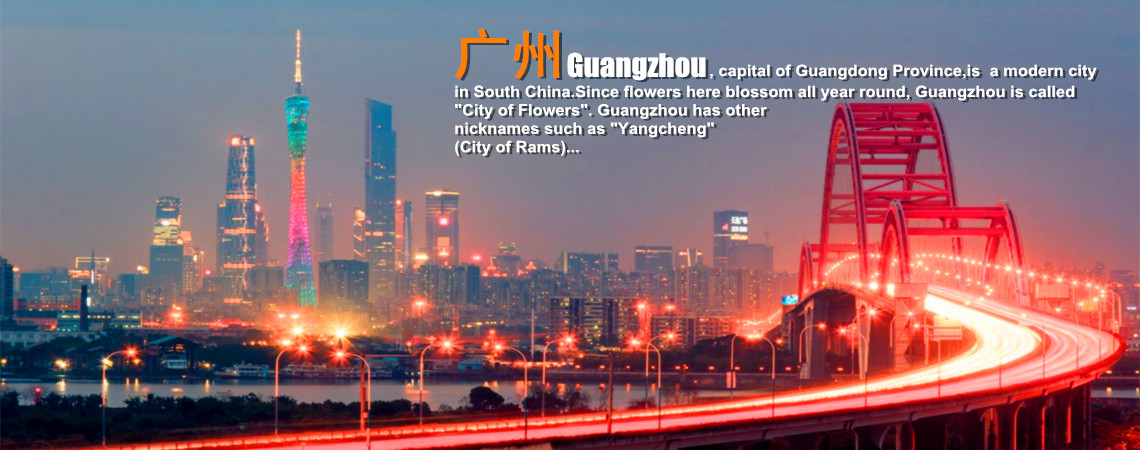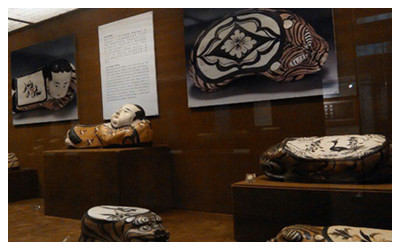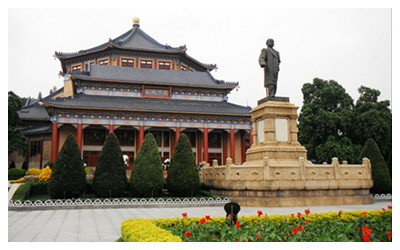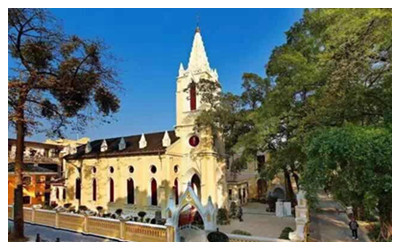
History of Guangzhou
 Guangzhou is a historical city with over 2,210 years of history. It was the capital city for the Nanyue Kingdom in the Han dynasty (203 AD – 111 AD). After a history of over 2000 years of Chinese culture influenced by many foreign cultures, Guangzhou boasts its unique Lingnan culture, which was reflected in many aspect of modern Guangzhou, such as Lingnan painting, Lingnan architecture, Lingnan gardens, Guangdong music ,Cantonese cuisine, Cantonese language. Read also please:
Guangzhou is a historical city with over 2,210 years of history. It was the capital city for the Nanyue Kingdom in the Han dynasty (203 AD – 111 AD). After a history of over 2000 years of Chinese culture influenced by many foreign cultures, Guangzhou boasts its unique Lingnan culture, which was reflected in many aspect of modern Guangzhou, such as Lingnan painting, Lingnan architecture, Lingnan gardens, Guangdong music ,Cantonese cuisine, Cantonese language. Read also please:
Guangzhou was also part of the so called “Maritime Silk Road” that linked southern China with India, South-East Asia, the Middle East, and Africa. As a result of its links with the Middle East, a mosque was established in the city in 627, and a small Muslim community continues to live in Guangzhou to this day. Additionally, the sixth patriarch of Zen Buddhism was born in Guangzhou and taught the famous Platform Sutra in the city. As a result, Guangzhou has retained a strong connection with this school of Buddhism, and the monastery where the sixth patriarch studied is considered a local treasure. The first Protestant missionary in China, Robert Morrison, entered Guangzhou in 1807. This started the spread of Christianity in the country.
 Guangzhou was the seat of the revolutionary movement under Sun Yat-sen in 1911; the Republic of China was proclaimed there. From Guangzhou the Nationalist armies of Chiang Kai-shek marched northward in the 1920s to establish a government in Nanjing. In 1927, Guangzhou was briefly the seat of one of the earliest Communist communes in China. The fall of Guangzhou to the Communist armies in late Oct., 1949, signaled the Communist takeover of all China. Under the Communist government, Guangzhou was developed as an industrial center and a modern port, with a great trade to and from Hong Kong. Read also please:
Guangzhou was the seat of the revolutionary movement under Sun Yat-sen in 1911; the Republic of China was proclaimed there. From Guangzhou the Nationalist armies of Chiang Kai-shek marched northward in the 1920s to establish a government in Nanjing. In 1927, Guangzhou was briefly the seat of one of the earliest Communist communes in China. The fall of Guangzhou to the Communist armies in late Oct., 1949, signaled the Communist takeover of all China. Under the Communist government, Guangzhou was developed as an industrial center and a modern port, with a great trade to and from Hong Kong. Read also please:
 The area around Guangzhou was overcrowded even 200 years ago, and many peasants from the region emigrated to Southeast Asia, North America and Europe. As a result, Cantonese is the most common dialect amongst overseas Chinese. Likewise, Cantonese cuisine is the most widely-known of all Chinese idioms: in Beijing one talks, in Shanghai one shops, and in Guangzhou one eats. Without a doubt, Guangzhou is best known for its eclectic food — from insect omelettes to dim sum. Famous for its snack-like form (dumplings, pastries and noodle dishes chosen from carts wheeled around the restaurant), dim sum is ubiquitous in Guangzhou.
The area around Guangzhou was overcrowded even 200 years ago, and many peasants from the region emigrated to Southeast Asia, North America and Europe. As a result, Cantonese is the most common dialect amongst overseas Chinese. Likewise, Cantonese cuisine is the most widely-known of all Chinese idioms: in Beijing one talks, in Shanghai one shops, and in Guangzhou one eats. Without a doubt, Guangzhou is best known for its eclectic food — from insect omelettes to dim sum. Famous for its snack-like form (dumplings, pastries and noodle dishes chosen from carts wheeled around the restaurant), dim sum is ubiquitous in Guangzhou.
Many historic sites including the Western Han Nanyue King’s Tomb Museum, and the Bright Filial Piety Temple tell us the ancient history of Guangzhou. Baiyunshan Scenic Area and Yuexiu Park showcase the natural scenery of Guangzhou. Shamian Island retains some of its former grandeur in the mansions with its exotic mansions. The Guangzhou Museum of Art is one of the best in China and is definitely worth a visit. Apart from that the real highlights are the city’s markets and vast bazaars.






 Ask Questions ?
Ask Questions ?